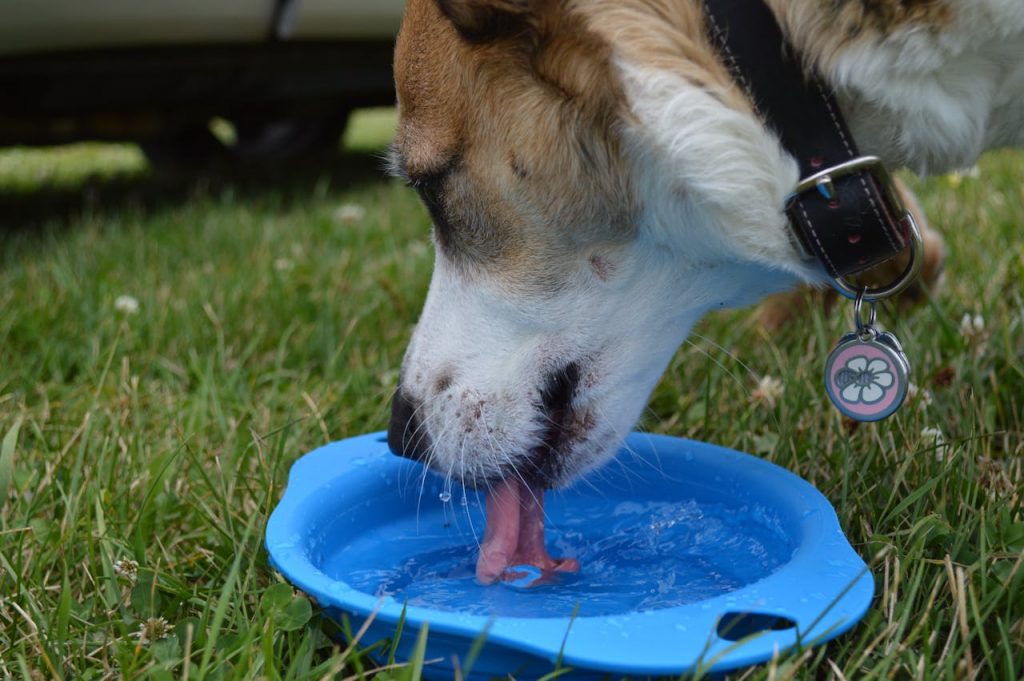
Diabetes in dogs is a metabolic condition that disrupts how the body processes and uses glucose. The disorder creates a situation where the bloodstream contains abundant glucose, yet the body’s cells starve for energy. This occurs when the pancreas fails to produce sufficient insulin or when the body’s cells can’t respond properly to insulin.
The consequences are serious – untreated diabetes can lead to devastating complications including kidney failure, cataracts, and life-threatening conditions like ketoacidosis. However, with proper diagnosis, consistent treatment, and vigilant monitoring, a diabetic dog can enjoy a normal lifespan and excellent quality of life.
What Are the Types of Diabetes That Affect Dogs?
When a dog receives a diabetes diagnosis, understanding the specific type is crucial for proper treatment. Dogs develop two primary forms of this metabolic disorder, each affecting the body’s relationship with insulin in distinct ways.
Type I Diabetes: Insulin-Deficient Diabetes
Type I diabetes represents the most common form in dogs, affecting approximately 80% of diabetic canines. This condition occurs when the pancreas fails to produce adequate insulin, the hormone responsible for allowing glucose to enter cells and provide energy.
The pancreas essentially stops functioning properly, often due to immune-mediated destruction of the beta cells that produce insulin. This creates a situation where blood sugar levels rise dangerously while cells starve for energy, unable to access the glucose circulating in the bloodstream.
Most dogs with Type I diabetes require lifelong insulin therapy through regular injections to manage their condition. The pandemic has highlighted challenges in insulin availability, with some veterinary clinics reporting occasional shortages of certain formulations.
Type II Diabetes: Insulin-Resistant Diabetes
Type II diabetes develops when cells become resistant to insulin’s effects. The pancreas produces insulin, sometimes even in increased amounts, but the body’s cells don’t respond properly to the hormone’s signals.
This form typically affects older or overweight dogs. The excess fat tissue interferes with insulin’s effectiveness, creating a cycle where the pancreas works harder to produce more insulin while blood sugar levels remain elevated. Chronic inflammation associated with obesity contributes significantly to this insulin resistance.
Some cases of Type II diabetes can be managed through diet, exercise, and weight management, though many dogs will eventually require insulin therapy as the condition progresses.
Breed Predispositions to Diabetes
Genetic factors play a substantial role in determining which dogs develop diabetes. Research from the University of Pennsylvania Veterinary School found that certain breeds show significantly higher rates of diabetes compared to mixed-breed populations.
Breeds with elevated risk include:
- Samoyeds (over 10 times higher risk)
- Australian Terriers
- Miniature Schnauzers
- Poodles (especially toy and miniature varieties)
- Beagles
- Dachshunds
- Pugs
- Cairn Terriers
- Labrador Retrievers
- Bichon Frise
The specific genetic mechanisms involved remain under investigation, but veterinary researchers believe multiple genes contribute to diabetes susceptibility in different breeds.
Other Risk Factors
Beyond breed, several other factors influence diabetes risk in dogs. Female dogs develop diabetes at nearly twice the rate of males, particularly unspayed females. The hormonal fluctuations during heat cycles and pregnancy can trigger temporary insulin resistance that sometimes becomes permanent.
Age also plays a critical role, with most dogs diagnosed between 7-10 years old. This middle-to-senior age range corresponds with natural changes in metabolism and increased prevalence of other conditions that may contribute to diabetes development.
Obesity remains perhaps the most significant modifiable risk factor. Dogs carrying excess weight experience chronic inflammation that damages pancreatic cells and promotes insulin resistance.
What Are the Warning Signs of Diabetes in Dogs?

Since dogs can’t communicate their discomfort directly, owners must stay alert to behavioral changes that may indicate health issues. With diabetes, early detection is essential for effective management and preventing complications.
Early Warning Signs
Diabetes symptoms often develop gradually, and can be mistaken for normal aging. Here’s what to monitor:
Excessive thirst (polydipsia) – If your dog empties their water bowl multiple times daily or seeks water from unusual places like toilets or puddles, this warrants attention. One owner noted their Beagle drinking nearly triple his normal amount before diagnosis.
Frequent urination (polyuria) – A house-trained dog may suddenly have indoor accidents or require nighttime bathroom trips. This occurs because the kidneys work overtime to filter excess glucose.
Increased hunger (polyphagia) – A diabetic dog may appear constantly hungry yet lose weight. Without proper insulin function, the body cannot convert food to energy effectively.
Unexplained weight loss – This happens even with normal or increased food intake, as the body breaks down fat and muscle for energy when unable to process glucose properly.
Advancing Symptoms
If diabetes remains undetected, these additional signs may develop:
Cloudy eyes or vision changes – About 80% of diabetic dogs develop cataracts. They may bump into objects or hesitate on stairs. Diabetic cataracts can form rapidly, sometimes within weeks of diagnosis.
Fatigue and depression – An energetic dog may become listless or disinterested in favorite activities. Some owners report their dogs appearing “mentally foggy” or disengaged.
Coat and skin changes – A dull, thinning coat or dry, flaky skin may develop as nutritional absorption becomes compromised.
Weakness or stiffness – Dogs might struggle with standing or climbing stairs due to glucose-deprived muscle cells.
Critical Warning Signs Requiring Immediate Attention
These symptoms indicate advanced or poorly controlled diabetes requiring urgent care:
Sweet-smelling or fruity breath – This indicates ketoacidosis, a potentially life-threatening condition where rapid fat burning creates acidic blood.
Vomiting or decreased appetite – During ketoacidosis, dogs often refuse food and may vomit repeatedly, contrasting with the earlier increased appetite.
Dehydration – Despite increased water intake, check for dry gums, sunken eyes, or skin that doesn’t quickly rebound when pulled.
Collapse or seizures – These emergency symptoms can result from extreme blood sugar fluctuations, particularly in dogs receiving insulin treatment.
Early recognition and treatment of diabetes symptoms is crucial for successful long-term management.
Breed Predispositions
While diabetes can affect any dog, Miniature Schnauzers, Poodles, Bichons Frises, and Australian Terriers show higher risk. Female dogs, especially unspayed ones, develop diabetes at nearly twice the rate of males. Overweight dogs also face increased risk, making regular weight monitoring essential.
Note: these symptoms may indicate other conditions like Cushing’s disease or kidney problems. Only veterinary testing can provide an accurate diagnosis.
How Is Diabetes in Dogs Diagnosed and Treated?
When your dog shows increased thirst or suddenly needs more bathroom breaks, these changes might indicate diabetes. Early detection is crucial for maintaining your dog’s quality of life.
The Diagnostic Journey
Diagnosing diabetes requires a comprehensive medical evaluation. Your veterinarian will conduct:
Blood tests to identify persistently high glucose levels. Consistent hyperglycemia (blood sugar above 200 mg/dl) indicates diabetes. A complete blood chemistry panel checks liver enzymes, electrolyte imbalances, and other health markers.
Urinalysis detects glucose in urine (glucosuria), which occurs when blood sugar levels rise so high that kidneys can’t reabsorb all the glucose.
Additional diagnostic tools might include:
- Fructosamine tests that measure average blood glucose over a 2-3 week period
- Pancreatic testing to check for concurrent pancreatitis
- Thyroid testing, since hypothyroidism can complicate diabetes
- Abdominal ultrasound to examine the pancreas and other organs
Treatment: A Multi-Faceted Approach
Managing canine diabetes requires commitment and consistency. The goal is to reduce symptoms and improve quality of life through insulin therapy, diet, and regular exercise.
Insulin Therapy: Dogs with diabetes typically require insulin injections. Your veterinarian will determine the appropriate type and dosage based on individual needs.
Common insulin types used for dogs include:
- Vetsulin/Caninsulin (porcine insulin) – FDA-approved for dogs
- ProZinc (protamine zinc insulin) – Also FDA-approved for canine use
- NPH insulin (Humulin N, Novolin N) – Human insulins used off-label with good results
- Levemir (detemir) and Lantus (glargine) – Longer-acting insulins that may work well for some dogs
Most dogs need insulin injections twice daily with meals. The tiny needles cause minimal discomfort, and your veterinary team will provide proper injection training.
Dietary Management: Diet directly affects blood glucose levels. Recommendations include:
- High-fiber diets that help slow glucose absorption
- Consistent meal times and portions
- Carefully controlled treats
- Avoiding table scraps that can cause blood sugar spikes
Exercise: Regular, moderate activity helps maintain stable blood glucose levels. Consistency is essential.
Monitoring: The Key to Successful Management
Regular monitoring ensures effective treatment. Your vet might recommend:
Blood Glucose Curves: Checking blood glucose every 1-2 hours over a 12-hour period shows insulin response throughout the day.
Continuous Glucose Monitoring: Devices like the Freestyle Libre provide constant glucose monitoring through a small sensor placed under your dog’s skin.
Fructosamine Testing: Reflects average glucose levels over 2-3 weeks.
Urine Glucose Monitoring: Helps track trends between vet visits.
Partnership with Your Veterinarian
Managing diabetes requires close collaboration with your veterinary team. Expect frequent visits during initial regulation, followed by check-ups every 3-6 months once stabilized.
With proper management, diabetic dogs can live full, happy lives. Stay alert to symptoms indicating treatment adjustments, such as increased thirst, appetite changes, or lethargy.
How Can You Successfully Manage Your Diabetic Dog’s Daily Care?

Managing diabetes in dogs requires a comprehensive care system that extends beyond insulin administration. Consistency is crucial for avoiding health complications.
Establish a Consistent Feeding Schedule
Consistency is essential for diabetic management. Dogs with diabetes need meals at precise times daily to maintain stable blood glucose levels. A high-fiber, low-fat diet with controlled carbohydrates helps slow glucose absorption and prevent blood sugar spikes.
Most veterinarians recommend feeding twice daily, 12 hours apart, coinciding with insulin administration. A 2023 study in the Journal of Veterinary Internal Medicine found that dogs on consistent feeding schedules showed 42% fewer glycemic fluctuations than those with irregular feeding times.
Master Insulin Administration
Insulin is essential for diabetic dogs. Your veterinarian will prescribe the appropriate type and dosage. Most dogs need injections twice daily, typically 30 minutes after meals to ensure food consumption before insulin.
Rotate injection sites between your dog’s back, flanks, and shoulder areas to prevent lipodystrophy—where scar tissue forms and affects insulin absorption. Store insulin in the refrigerator (not frozen) and gently roll the vial between your hands before use to avoid damaging insulin molecules.
Maintain Regular Exercise
Exercise enhances insulin sensitivity and helps maintain healthy weight in diabetic dogs. Consistency is key—sudden changes in activity can destabilize blood sugar levels.
Focus on moderate, regular activity like daily leash walks of consistent duration rather than sporadic intense exercise. Monitor for signs of hypoglycemia during and after physical activity, particularly when routines change.
Monitor Blood Glucose Levels
Home blood glucose monitoring can significantly improve diabetes management. Modern monitoring devices are increasingly user-friendly. While daily checks aren’t always necessary, tracking patterns helps facilitate effective communication with your veterinarian.
Maintain a log of glucose readings, insulin doses, food intake, activity levels, and unusual symptoms. This data helps identify patterns during veterinary check-ups that may require treatment adjustments.
Recognize Warning Signs
Understanding signs of both hyperglycemia (high blood sugar) and hypoglycemia (low blood sugar) is crucial.
Hyperglycemia symptoms include increased thirst, frequent urination, lethargy, and increased appetite despite weight loss. Emergency care is typically only needed if ketoacidosis develops, marked by vomiting, rapid breathing, and extreme lethargy.
Hypoglycemia requires immediate attention and can occur from excess insulin, missed meals, or excessive exercise. Watch for disorientation, weakness, trembling, seizures, or collapse. Keep corn syrup or honey ready to apply to your dog’s gums during hypoglycemic episodes, then contact your veterinarian.
Schedule Regular Veterinary Check-ups
Veterinary monitoring is vital for diabetic dogs. Most veterinarians recommend check-ups every 3-6 months, including physical exams, blood glucose curves, and fructosamine tests that indicate average glucose levels.
These appointments enable insulin dosage adjustments and early detection of complications like cataracts, urinary tract infections, or neuropathy. Insulin requirements may change as dogs age or develop other health conditions.
Create a Daily Management System
Organization streamlines diabetes management. Use phone reminders, feeding timers, or calendars to track feeding times, insulin administration, and vet appointments. Pre-measure weekly food portions to ensure consistency. Keep an emergency kit with spare insulin, syringes, glucose source, and veterinary contact information.
While managing a diabetic dog requires dedication, most owners quickly adapt to the routine. With proper care, diabetic dogs can maintain excellent quality of life for years after diagnosis.
Living Well with Canine Diabetes: Your Action Plan for Better Days Ahead
A diabetes diagnosis for your dog is manageable with vigilant care and a structured routine. Through regular insulin therapy, balanced diet, controlled exercise, and diligent monitoring, your dog can continue to thrive.
Modern tools and technology enhance daily management. Smart collars like the Halo Collar support consistent exercise routines through customizable boundaries and real-time activity tracking. These features help maintain optimal blood sugar levels while keeping your dog safe during physical activity.
Partner with your veterinarian for personalized guidance and connect with community resources for support. With dedicated care and the right management tools, your diabetic dog can enjoy a long, fulfilling life.
To discover more expert insights on canine health concerns and solutions, visit our Dog Health page.





